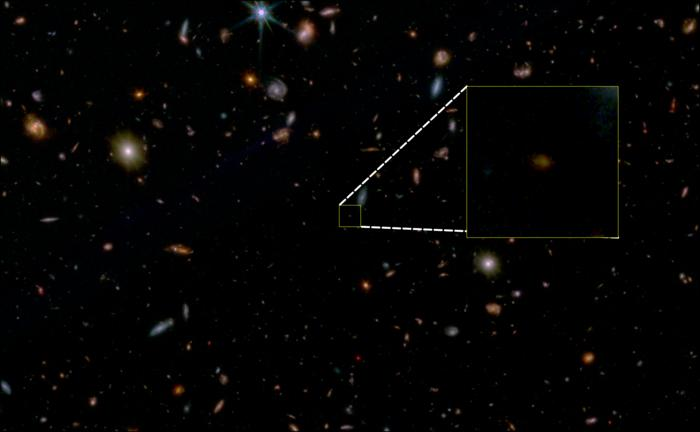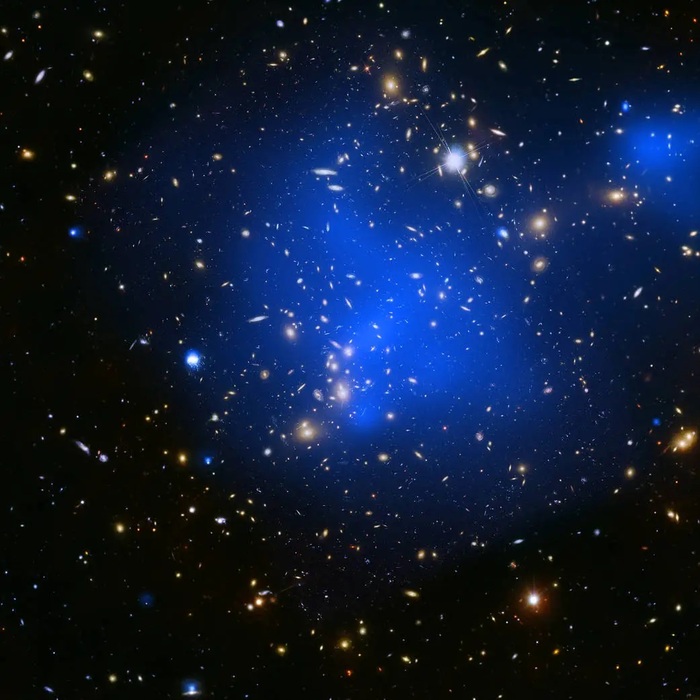Enlarge image
Mirror of the James Webb telescope in the laboratory before the trip into space
Photo: Chris Gunn/AP
Astronomers around the world hope that the James Webb Space Telescope will provide insights into the depths of space that would not have been possible before.
One of the missions of the ten billion dollar instrument: The telescope is to search for traces from the early days of the universe - i.e. as close as possible to the Big Bang around 13.8 billion years ago.
Apparently, a few days after the first images of the observatory were published, it has already struck gold.
According to the data, the James Webb may have discovered a 13.5 billion year old galaxy - making it the oldest and most distant star system ever observed.
The galaxy called GLASS-z13 was formed around 300 million years after the Big Bang, said Rohan Naidu from the Center for Astrophysics at Harvard University on Wednesday.
"We're potentially seeing the most distant starlight anyone has ever seen."
The discovery by a team of 25 astronomers from around the world is based on preliminary data from a space telescope instrument that captures infrared rays.
When the data is visualized, the galaxy appears as a red circle with a brighter center.
The evaluation has already been submitted to a specialist journal, but has not yet been independently checked by other scientists.
Nevertheless, experts reacted enthusiastically to the possible discovery.
"Astronomy records are already tumbling, and others are shaking," wrote the chief scientist of the US space agency Nasa, Thomas Zurbuchen, on Twitter.
Normally he only cheers after study results have been checked by other scientists.
"But that looks very promising." NASA researcher Naidu said another team of astronomers analyzed the same data and came to a similar conclusion.
"That gives us confidence."
The first images showed the Carina Nebula
NASA released the first images taken by the James Webb Space Telescope last week.
The spectacular images included galaxies 13 billion years old and the Carina Nebula, a cloud of cosmic dust and gas 7,600 light-years away.
The James Webb telescope, which was also built with German participation, was launched in December after decades of preparation.
It is now more than a million kilometers from Earth.
It explores the early days of the cosmos, just a few hundred million years after the Big Bang around 13.8 billion years ago.
Astronomers hope to draw conclusions about the formation of the first stars and galaxies.
The telescope also searches space for exoplanets.
joe/AFP








/cloudfront-eu-central-1.images.arcpublishing.com/prisa/PA5TT2ZCYBDNLEAREMUPESRVOM.jpg)
